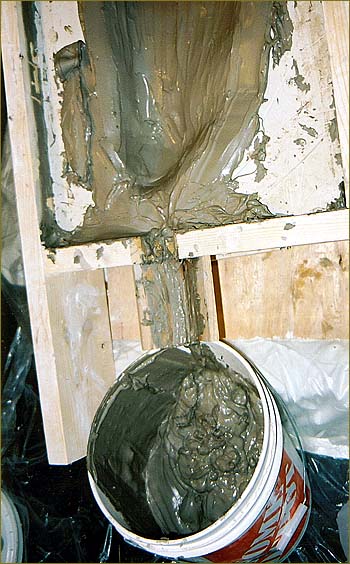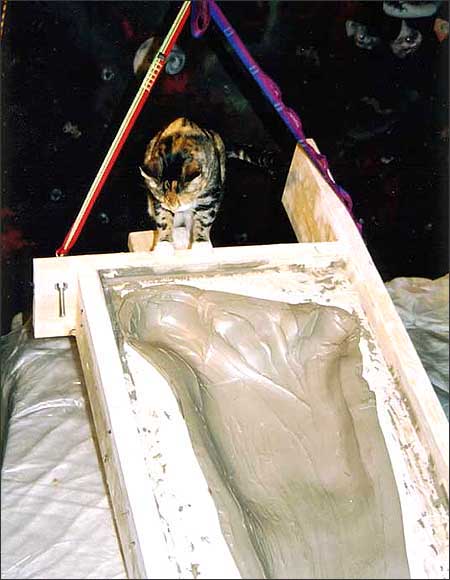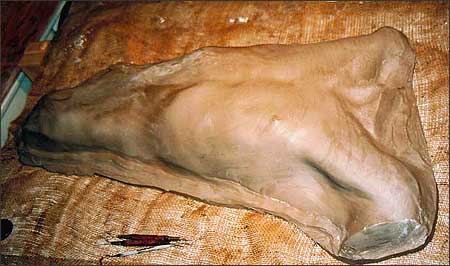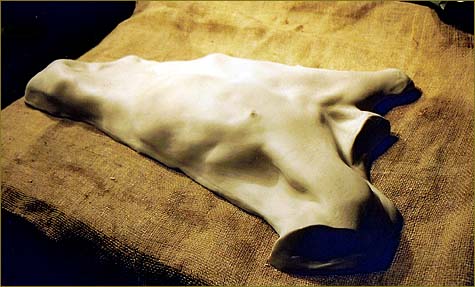
Scraping out gelled slip.
January, 2001.
Once the plaster negative has been made, it is important to let most of the moisture held in the pore throats of the plaster evaporate. In a plaster mold as large as some of the ones you see throughout this site, this can take several weeks (even up here in the arid environment that is my winter Calgary basement!).
I just have to say this again: there is something magic about clay as a material. Into the dried plaster mold clay slip is poured. "Slip" is a liquid clay mixture that you should be able to pour. It contains a little more water than regular clay, as well as some chemicals called "deflocculants". The presence of a deffloculant decreases the viscosity (tendancy to resist flow) of what would normally be a thick, almost plastic mixture of clay. The deflocculated clay becomes a very dense yet very fluid liquid that will pour. I make my clay slip from a low fire powdered Plainsman Clay (50% talc, 50% ball clay). There is a bit of magic associated with mixing up a proper batch of slip...definately a subject for good discussion. Excellent treatment is given to this task on the Digital Fire website.
As the following pictures will attest, mixing up a proper slip is something that challenges me regularly!The liquid clay mixture is poured into the plaster mold. The pores of the plaster begin to "suck" moisture out of the clay, thickening it in the near vicinity of the mold. Once a suitable wall thickness has built up around the mold, the remaining clay slip is poured from the mold. The clay is then left in the mold for a bit until it begins to pull away from the edge of the mold. The mold is then inverted lifted off the clay positive.
 Scraping out gelled slip. January, 2001. |
 Mold is suspended from ceiling to allow clay slip to drain from mold. January, 2001 |
 Draining clay slip from mold. This slip was a little over-flocculated. January, 2001 |
 Nothing escapes inspection from the eyes of the Supervisor January, 2001. |
 Male Form. Unfinished Clay Positive. January, 2001 |
 Male Form. Form as unfired clay. January, 2001 |